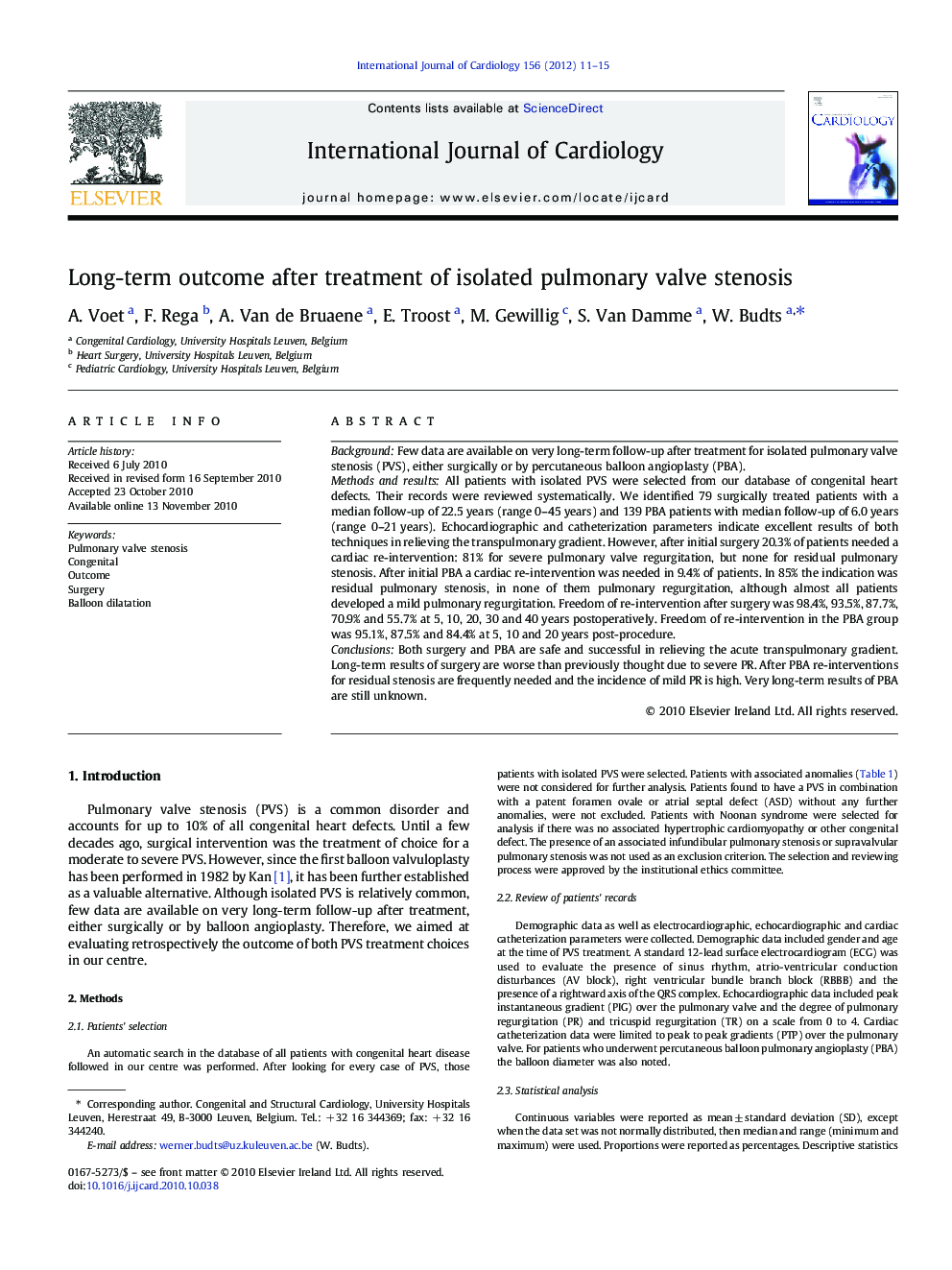| Article ID | Journal | Published Year | Pages | File Type |
|---|---|---|---|---|
| 5978992 | International Journal of Cardiology | 2012 | 5 Pages |
BackgroundFew data are available on very long-term follow-up after treatment for isolated pulmonary valve stenosis (PVS), either surgically or by percutaneous balloon angioplasty (PBA).Methods and resultsAll patients with isolated PVS were selected from our database of congenital heart defects. Their records were reviewed systematically. We identified 79 surgically treated patients with a median follow-up of 22.5Â years (range 0-45Â years) and 139 PBA patients with median follow-up of 6.0Â years (range 0-21Â years). Echocardiographic and catheterization parameters indicate excellent results of both techniques in relieving the transpulmonary gradient. However, after initial surgery 20.3% of patients needed a cardiac re-intervention: 81% for severe pulmonary valve regurgitation, but none for residual pulmonary stenosis. After initial PBA a cardiac re-intervention was needed in 9.4% of patients. In 85% the indication was residual pulmonary stenosis, in none of them pulmonary regurgitation, although almost all patients developed a mild pulmonary regurgitation. Freedom of re-intervention after surgery was 98.4%, 93.5%, 87.7%, 70.9% and 55.7% at 5, 10, 20, 30 and 40Â years postoperatively. Freedom of re-intervention in the PBA group was 95.1%, 87.5% and 84.4% at 5, 10 and 20Â years post-procedure.ConclusionsBoth surgery and PBA are safe and successful in relieving the acute transpulmonary gradient. Long-term results of surgery are worse than previously thought due to severe PR. After PBA re-interventions for residual stenosis are frequently needed and the incidence of mild PR is high. Very long-term results of PBA are still unknown.
